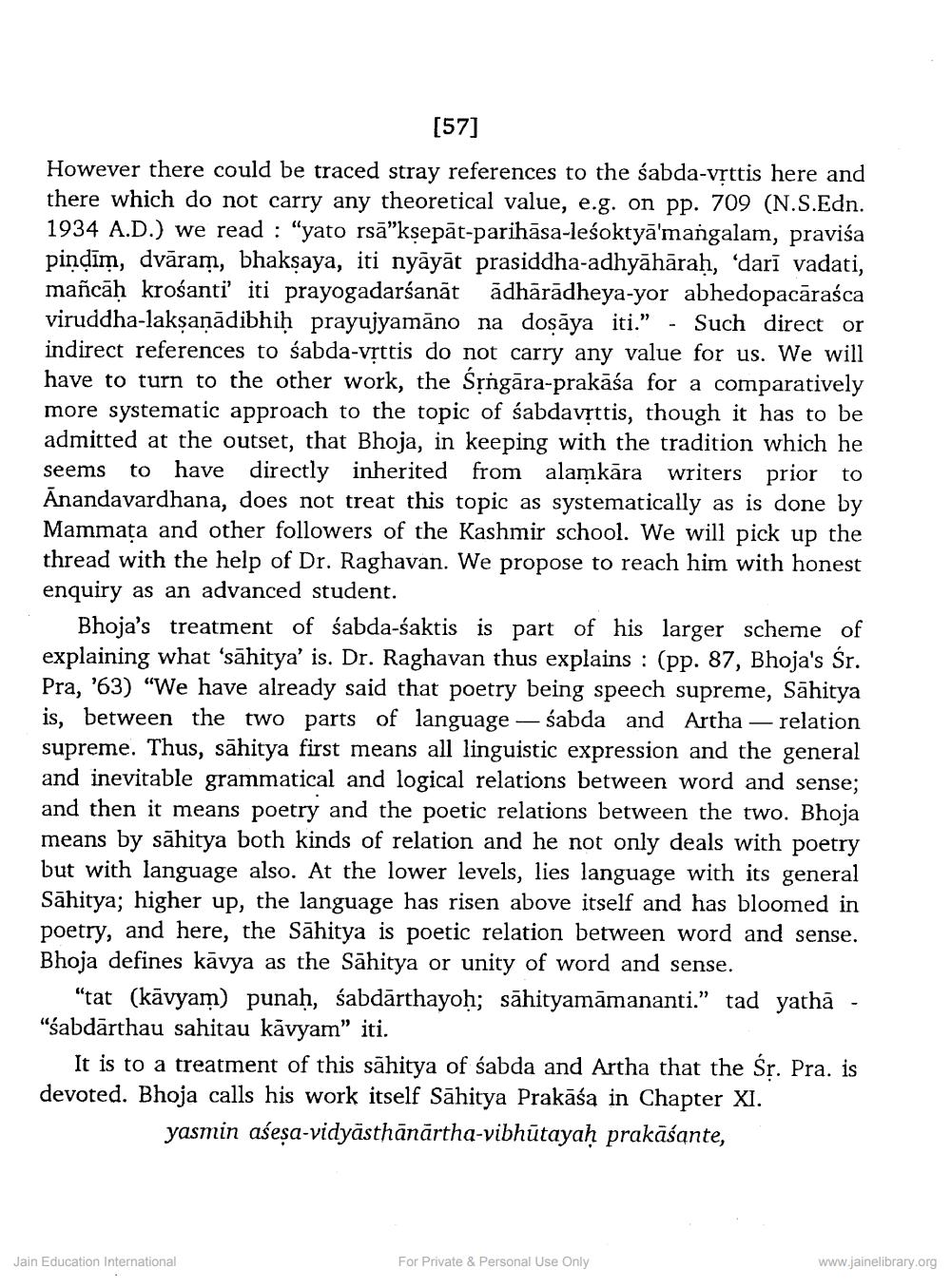________________
[57]
However there could be traced stray references to the sabda-vrttis here and there which do not carry any theoretical value, e.g. on pp. 709 (N.S.Edn. 1934 A.D.) we read : "yato rsā”ksepāt-parihāsa-leśoktyā'mangalam, pravisa pindīm, dvāram, bhaksaya, iti nyāyāt prasiddha-adhyāhāraḥ, darī vadati, mañcāḥ krośanti' iti prayogadarśanāt ādhārādheya-yor abhedopacārasca viruddha-laksaņādibhiḥ prayujyamāno na dosāya iti." - Such director indirect references to śabda-vịttis do not carry any value for us. We will have to turn to the other work, the Sệngāra-prakāśa for a comparatively more systematic approach to the topic of śabdavịttis, though it has to be admitted at the outset, that Bhoja, in keeping with the tradition which he seems to have directly inherited from alamkāra writers prior to Anandavardhana, does not treat this topic as systematically as is done by Mammata and other followers of the Kashmir school. We will pick up the thread with the help of Dr. Raghavan. We propose to reach him with honest enquiry as an advanced student.
Bhoja's treatment of śabda-śaktis is part of his larger scheme of explaining what 'sāhitya' is. Dr. Raghavan thus explains : (pp. 87, Bhoja's Śr. Pra, '63) “We have already said that poetry being speech supreme, Sāhitya is, between the two parts of language - sabda and Artha — relation supreme. Thus, sāhitya first means all linguistic expression and the general and inevitable grammatical and logical relations between word and sense; and then it means poetry and the poetic relations between the two. Bhoja means by sahitya both kinds of relation and he not only deals with poetry but with language also. At the lower levels, lies language with its general Sāhitya; higher up, the language has risen above itself and has bloomed in poetry, and here, the Sahitya is poetic relation between word and sense. Bhoja defines kāvya as the Sāhitya or unity of word and sense.
"tat (kāvyam) punah, śabdārthayoh; sāhityamāmananti.” tad yathā - “sabdārthau sahitau kävyam” iti.
It is to a treatment of this sāhitya of sabda and Artha that the Śr. Pra, is devoted. Bhoja calls his work itself Sāhitya Prakāśa in Chapter XI.
yasmin aśesa-vidyāsthānārtha-vibhūtayaḥ prakāśante,
Jain Education International
For Private & Personal Use Only
www.jainelibrary.org




